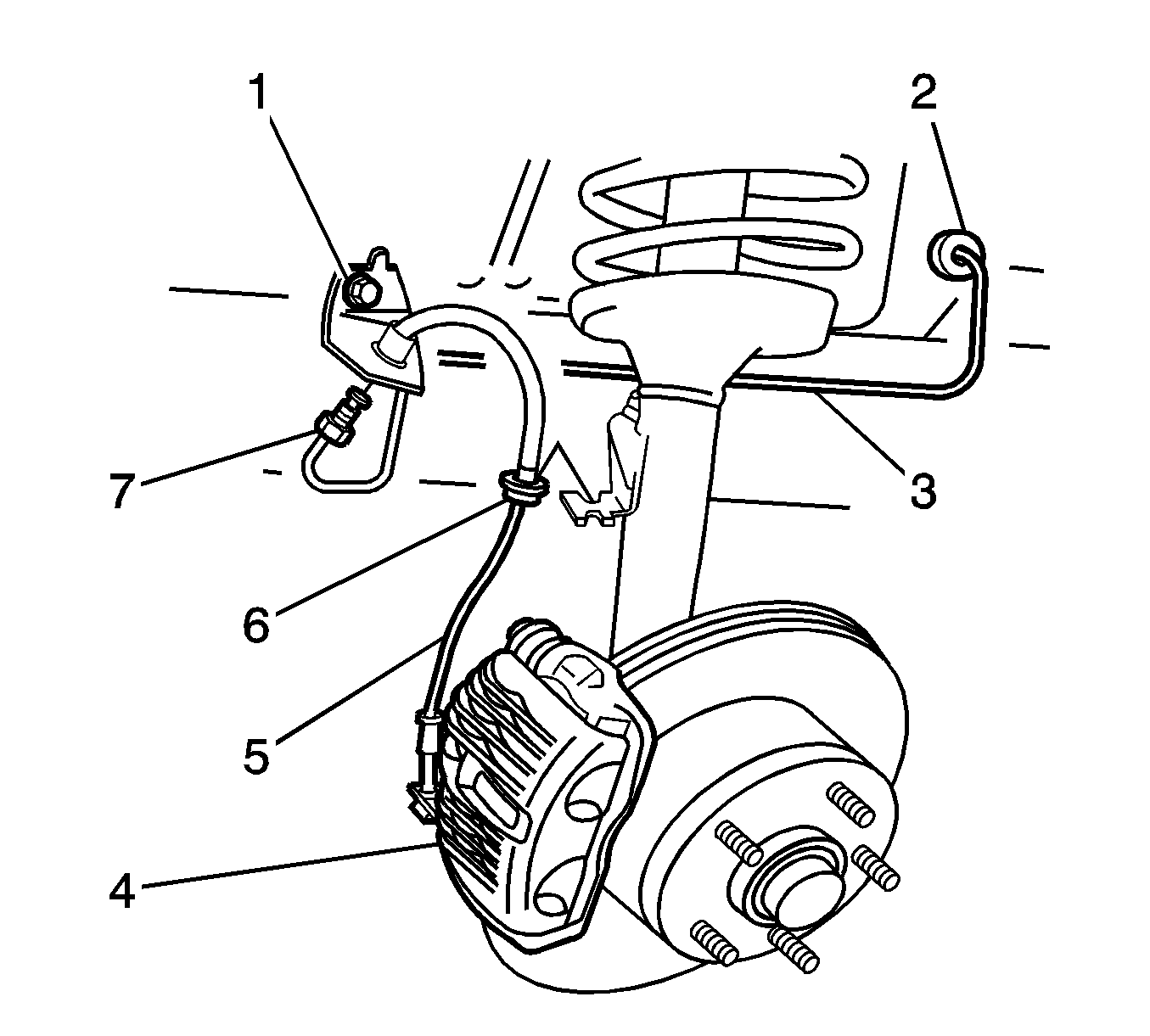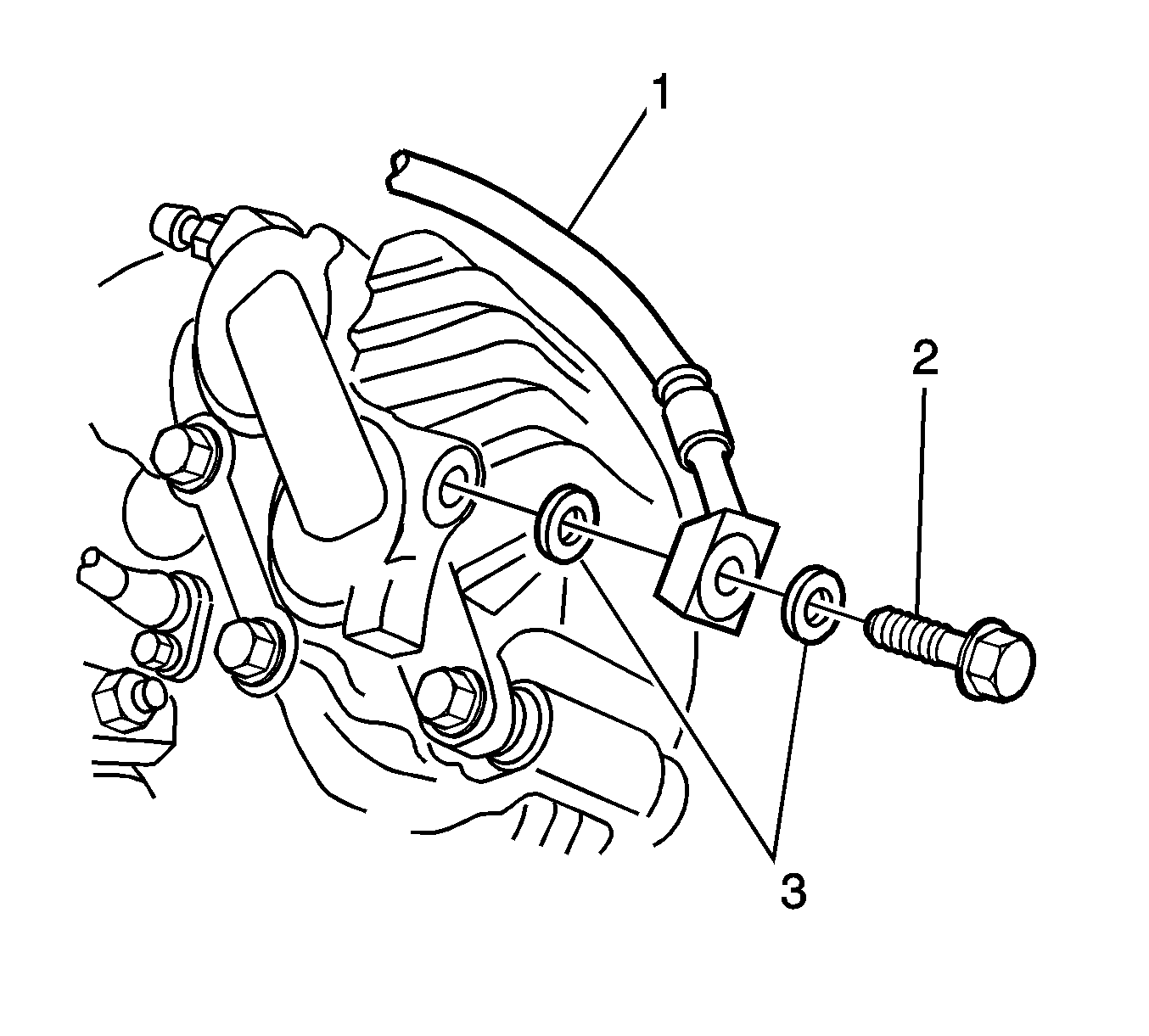For 1990-2009 cars only
Removal Procedure
- Raise and support the vehicle. Refer to Lifting and Jacking the Vehicle in General Information.
- Remove the front tire and wheel assembly. Refer to Tire and Wheel Removal and Installation in Tires and Wheels.
- Clean the brake hose (5) and the fittings.
- Loosen and disconnect the brake pipe flare nut (7).
- Install a cap or a plug to the brake pipe in order to prevent brake fluid loss and contamination.
- Remove the screw (1) from the brake hose bracket.
- Remove the hose and the grommet (6) from the strut.
- Remove the fitting (2) from the caliper.
- Remove the brake hose (1) from the caliper.
- Remove and discard the 2 brake hose gaskets (3).
- Install a cap or a plug to the caliper in order to prevent brake fluid loss and contamination.

Caution: Refer to Brake Fluid Irritant Caution in the Preface section.
Notice: Refer to Brake Fluid Effects on Paint and Electrical Components Notice in the Preface section.

Installation Procedure
- Ensure the brake hose and the caliper mating surfaces are clean and free of burrs.
- Remove the cap or the plug from the caliper.
- Install the following components to the caliper:
- Tighten the fitting.
- Install the brake hose (5) and the grommet (6) to the bracket on the strut.
- Verify the brake hose is not twisted.
- Install the brake hose bracket and the screw (1).
- Remove the cap or the plug from the brake pipe.
- Install the brake pipe to the brake hose.
- Tighten the brake pipe flare nut (7).
- Bleed the hydraulic brake system at the front caliper bleeder valve. Refer to Hydraulic Brake System Bleeding .
- Install the front tire and wheel assembly. Refer to Tire and Wheel Removal and Installation in Tires and Wheels.
- Lower the vehicle.

| • | 2 NEW brake hose gaskets (3) |
| • | The fitting (2) |
| • | The brake hose (1) |
Notice: Refer to Fastener Notice in the Preface section.
Tighten
Tighten the fitting to 35 N·m (26 lb ft).

Tighten
Tighten the flare nut to 16 N·m (12 lb ft).
